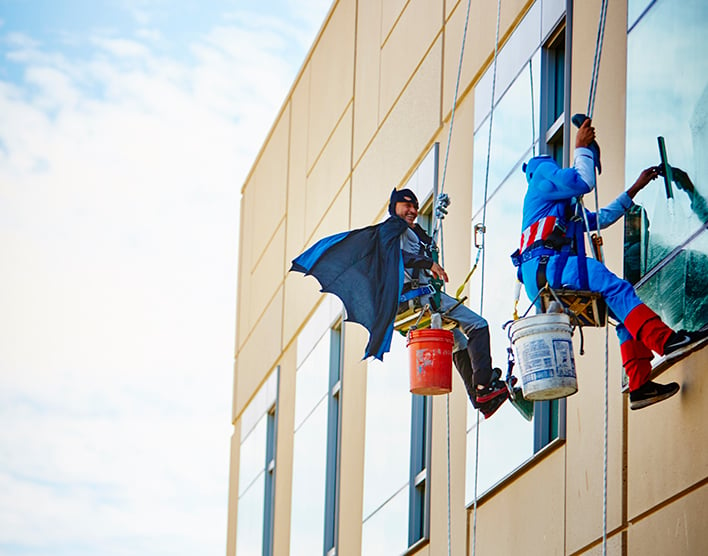Staff superheroes
It’s a bird. It’s a plane. It’s a window washer! Dressed as a superhero to clean and brighten your day.


Urinary incontinence is defined as the involuntary leakage of urine past the age when the child is expected to have urinary control. It can occur at night — called nocturnal enuresis, or bedwetting — or during the day. In some cases, the problem can occur after the child was toilet trained and had a period of staying dry.
The prevalence of incontinence in children hasn't been well studied. However, about 15 percent of 5-year-olds are believed to have nighttime incontinence. Studies of children beginning school have found 3.1 percent of girls and 2.1 percent of boys have an episode of daytime wetting at least once a week.
While some cases are due to problems with the structure of the urinary tract, in many children the problem is caused by abnormal voiding habits. Learning and practicing good voiding habits can help these children stay dry. Many children also outgrow incontinence on their own, without treatment, as they get older and their bodies develop.
Problems associated with incontinence can include bladder infections, stool (poop) incontinence, constipation and problems with self-esteem and behavior. Less common but more serious problems include reflux of urine back up into the kidneys, kidney infections, kidney scarring and high blood pressure.
We evaluate children with incontinence on an outpatient basis. During the initial consultation, we will take a careful medical history, including questions regarding parental or sibling bedwetting, previous urinary tract problems, toilet training and daytime control.
The physical exam will include careful examination of the abdomen and genitals, and of the legs and perineum — the area between the anus and genitals — to determine sensation and adequate motor development. We also inspect the lower back for any signs of possible abnormalities of the spinal cord.
In addition, some children will need one or more of the following tests:
Children with incontinence are treated in our Children's Continence Clinic. Effective treatment relies on identifying any anatomical problems that may be causing incontinence and discussing all treatment options.
Some of the treatments include education on healthy voiding habits, behavior modification, urinating on a schedule (called timed voiding), using conditioning alarms that waken the child as he or she begins to urinate during sleep, biofeedback and hypnosis.
Before being seen at the Children's Continence Clinic, parents must first attend a Pediatric Urology Parent (PUP) seminar. The seminar is free and will teach you about dealing with continence issues in post-potty trained children. After the seminar you can make an appointment for your child, or try some of the techniques you learned in the seminar first. To reserve a space in the next seminar, please call the clinic.
UCSF Benioff Children's Hospitals medical specialists have reviewed this information. It is for educational purposes only and is not intended to replace the advice of your child's doctor or other health care provider. We encourage you to discuss any questions or concerns you may have with your child's provider.

UCSF Baskin Lab
The Baskin Laboratory investigates the causes of pediatric urological diseases present at birth or acquired later. The lab's research has a special focus on curing and preventing hypospadias, in which the urethra's opening is on the underside of the penis.

Best in Northern California for urology

Ranked among the nation's best in 11 specialties
Staff superheroes
